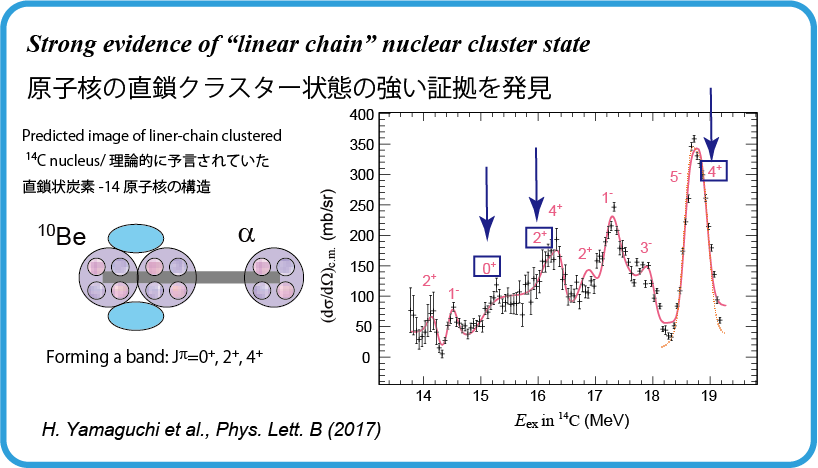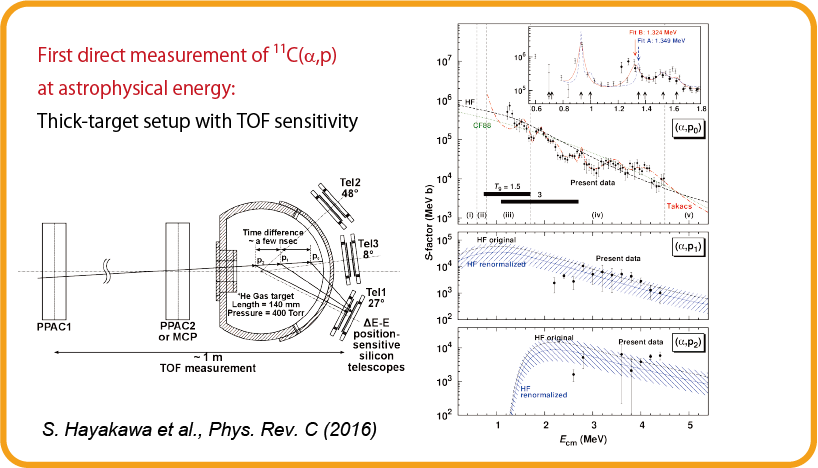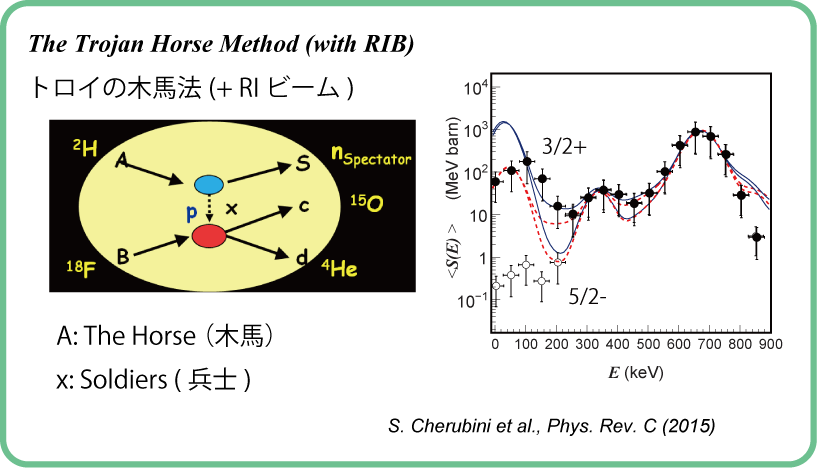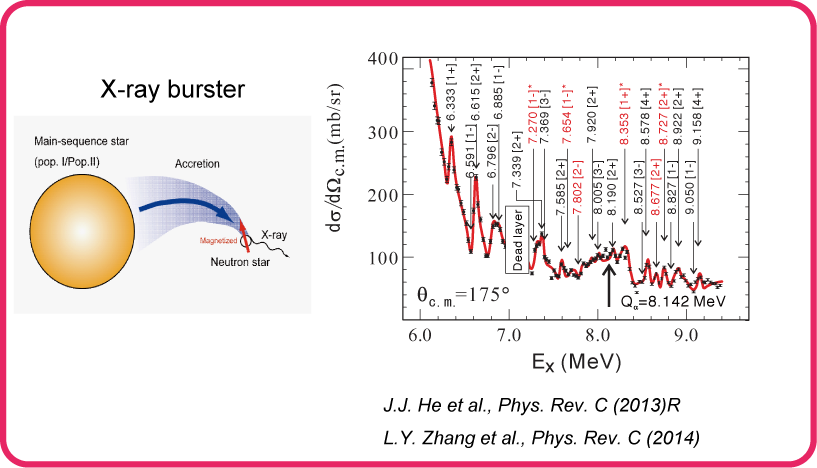From the latest works
 |
Linear-chain cluster states in 14C nucleusIt is a well-known fact that a cluster of nucleons can be formed in the interior of an atomic nucleus, and such clusters may occupy molecular-like orbitals, showing characteristics similar to normal molecules consisting of atoms. Chemical molecules having a linear alignment are commonly seen in nature, such as carbon dioxide. A similar linear alignment of the nuclear clusters, has been studied since the 1950s, however, there has been no clear experimental evidence demonstrating the existence of such a state. Recently, it was predicted that an excess of neutrons may offer a stabilizing mechanism, and linear-chained 14C (Carbon-14) can be formed. Using the 10Be+α resonant scattering method with radioactive beam, w we observed a series of levels which completely agree with theoretically predicted linear-chain cluster states . We regard this as the first strong evidence of the linear-chain clustered nucleus. This work can be considered as an important step as a new technique in the alignment and morphology of the atomic nucleus. |
 |
First direct measurement of the steller 11C(α, p)14N reactionThe 11C(α, p)14N reaction is an important α-induced reaction competing with hydrogen-burning processes in high-temperature explosive stars, such as x-ray bursters and supernovae. We directly measured its reaction cross sections both for the ground-state transition (α, p0) and the excited-state transitions (α, p1) and (α, p2) at relevant stellar energies 1.3-4.5 MeV by an extended thick-target method featuring time of flight for the first time. We revised the reaction rate including the (α, p1) and (α, p2) contributions and also low-lying resonances of (α,p0) using both the present and the previous experimental data which were totally neglected in the previous compilation works. |
 |
Trojan horse method on 18F+d for the 18F(p,α)15O reactionThe world's first experiment using the Trojan horse method (THM) with an RI beam has been carried out at CRIB. The Trojan Horse Method is a special experimental technique to study B+x → c+d reaction by A+B → S+c+d reaction, where A is composed of S and x. The particle x (proton, in our case) acts as a soldier to make reaction, brought by the horse A, which is to penetrate the Coulomb barrier of the nucleus. The THM had been used with stable beams, but it was used with an RI beam (18F, Fluorine-18) for the first time in the world. The 18F(p,α)15O reaction is particularly responsible for the 511-keV γ ray emission in nova explosion phenomena. We evaluated the very low-energy (< 250 keV) reaction cross section, corresponding to the novae temperature and even below, which was experimentally unknown. |
 |
Proton resonant scattering on 21Na for the 18Ne(α,p)21Na reaction studyWe sometimes observe a large number of X-rays emitted from a star, which is a phenomenon called as "X-ray burst" . The 18Ne(α,p)21Na reaction is considered as a key reaction to ignite the X-ray bursts , however, it is not easy to study since the reaction is between two unstable nuclei. We produced an RI beam of 21Na at CRIB, and studied the nuclear resonances related to this reaction. As shown in the figure, we observed many resonances and we successfully fitted them with a theoretical calculation, obtaining the parameters of the resonances. The magnitude of the resonances provide the rate of 18Ne(α,p)21Na reaction in the stars, and a more reliable evaluation compared to previous works was made. Moreover, we showed an increase of the energy generation by 40-80 % over the known value, at a moment in the very early stage of the burst. |
For reference information, please see Publications page.